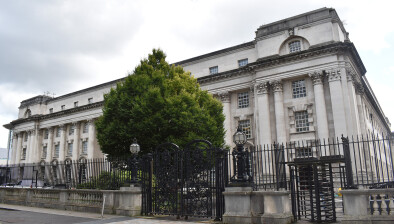NI: Court of Appeal: Pearse Jordan’s mother fails in bid to appeal inquest
The mother of Patrick Pearse Jordan, who was 22 years old when he was fatally shot by a member the RUC in Belfast in 1992, has lost an appeal against the refusal to grant leave to apply for judicial review of the latest inquest into his death.

About this case:
- Judgment:
- Court:Court of Appeal
- Judge:Lord Justice Stephens
Dismissing all six grounds for judicial review which were raised by Mrs Jordan, Lord Justice Ben Stephens was satisfied that the Coroner was not unreasonable in his findings, and upheld the decision of Mrs Justice Siobhan Keegan to refuse to grant leave.
Background
In November 2016, sitting as the Coroner at the inquest into Pearse Jordan’s death, Mr Justice Mark Horner said it was impossible with the passage to time to say with any certainty what happened.
In his judgment, Mr Justice Horner criticised the PSNI for creating obstacles and difficulties that prevented progress in the inquest, and ultimately found that neither side were able to convince him of what they said had occurred immediately prior to Pearse’s death.
In the High Court in October 2017, Mrs Justice Siobhan Keegan refused to grant leave to apply for judicial review in respect of Mr Justice Horner’s verdict, on the basis that none of the grounds gave rise to an arguable case.
Grounds for Judicial Review
Pearse’s mother, Mrs Theresa Jordan, contended that the Mr Justice Horner verdict should be quashed on grounds that he:
- Abdicated his responsibility to arrive at a verdict in relation to the central issues to be determined in the inquest concluding that “it is now impossible with the passage of time to say with any certainty what happened on that fateful afternoon”;
- Fell into error in relation to both the burden and the standard of proof to be applied by effectively imposing a burden on the next of kin to prove their case in respect of the allegations against Sergeant A;
- Failed to take into account (and therefore essentially rejected without evaluation or explanation) the agreed expert ballistics evidence;
- Failed to appreciate the importance and significance of the RUC’s Code of Conduct and failed to give any or adequate weight to Sergeant A’s admitted breaches of it;
- Relied upon the evidence of some police officers but rejected, without explanation, a strand of their evidence that rendered the account given by Sergeant A inherently implausible; and
- Failed to reach a determination on the question of whether Officer V had perjured himself in the inquests in 2012 and 2016.
Court of Appeal
The Court said it would deal with the matter by way of a rolled up hearing of both the appeal against the refusal of leave and if then appropriate a determination of the substantive application for judicial review.
On the first ground, Mrs Jordan contended that the Coroner was obliged as a matter of law to make every effort to arrive at a conclusion, that only in the most exceptional circumstances would it be proper for a Coroner to fail to reach a verdict on the evidence, and that the reasons given by the Coroner for his failure to reach a conclusion were neither exceptional nor sufficient to justify his findings.
Lord Justice Stephens said that the Court agreed with the Coroner “that it was not and could not be said to be a binary decision” and that “the Coroner was positively obliged to consider the third possible outcome as to whether he was undecided provided that he gave his reasons for being undecided”. Since no particular had been proved to the Coroner, the Court concluded that his verdict represented the proper discharge, rather than the abrogation, of section 31 of the Coroners Act (NI) 1959. Lord Justice Stephens also rejected criticism of the Coroner’s reliance on delay as a reason for not coming to a conclusion, emphasising that this was not the only reason given for being undecided on various issues.
On the second ground, Lord Justice Stephens was satisfied from a reading of the entire verdict, that the Coroner applied the civil standard of proof, and that he did not place any onus on the next of kin.
On the third ground, Mrs Jordan submitted that the ballistics evidence was crucial in determining the issue of whether Pearse had turned and if this was in a clockwise direction, but that the Coroner disregarded the ballistics evidence in its totality without explanation or justification. Rejecting this ground, Lord Justice Stephens said that there was nothing irrational or Wednesbury unreasonable about the Coroner deciding that he could not come to a factual decision on the expert evidence.
On the fourth ground, Lord Justice Stephens said that the Coroner was correct to state that the RUC’s Code of Conduct did not represent law on self-defence, that the Coroner applied the proper legal standard governing the use of lethal force, both in domestic and ECHR terms, and that he did take into account the breach of the Code by Sergeant A as part of his evidential determination.
On the fifth ground, Lord Justice Stephens explained that it was permissible for an adjudicator of fact to accept part of the evidence of a witness and not accept another part. Emphasising that “only on the rarest of occasions would the Court be justified in finding that the Coroner had formed a wrong opinion”, Lord Justice Stephens dismissed this ground stating that the Court was not persuaded that this aspect of the fact-finding process was unreasonable.
On the final ground, the central issue was whether the primary purpose of the debrief was to facilitate the exoneration of Sergeant A. In this regard, Mrs Jordan submitted that Officer V had made statements in the Stalker/Sampson reports that he knew were inaccurate. Lord Justice Stephens said that the Coroner had the opportunity to assess all the evidence, which included seeing Officer V give his evidence and assess his credibility. Placing emphasis on the rarity of justifying a finding that the Coroner had formed a wrong opinion, the Court did not consider this aspect of the fact-finding process to be unreasonable.
Rejecting all grounds, the Court dismissed the appeal.
- by Seosamh Gráinséir for Irish Legal News







